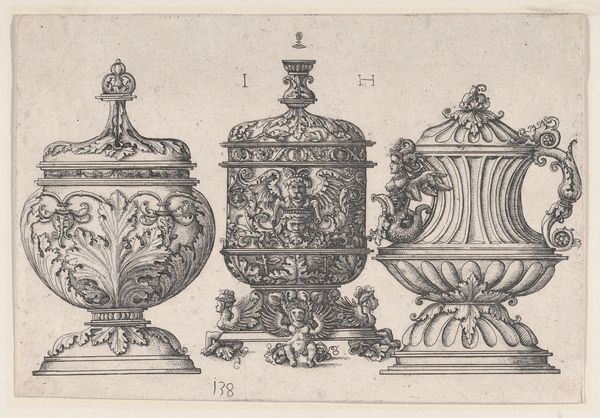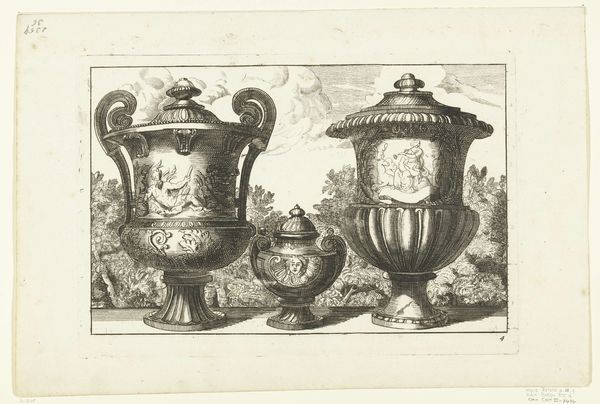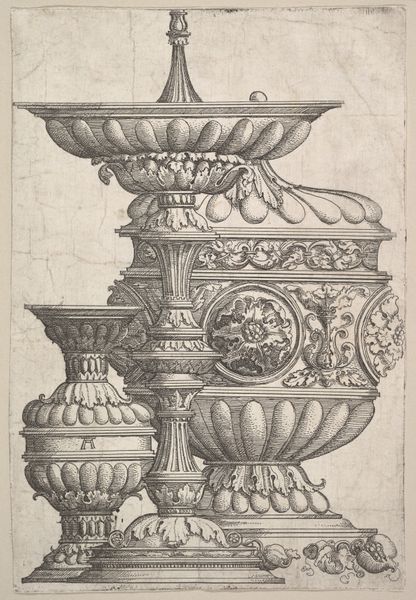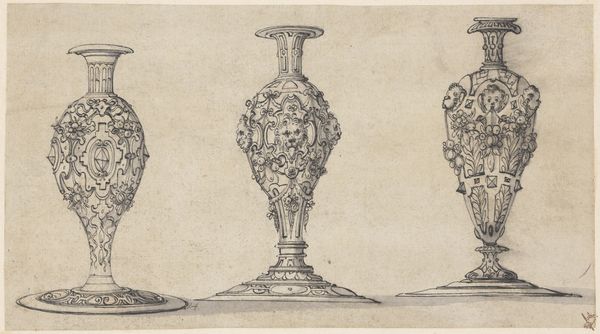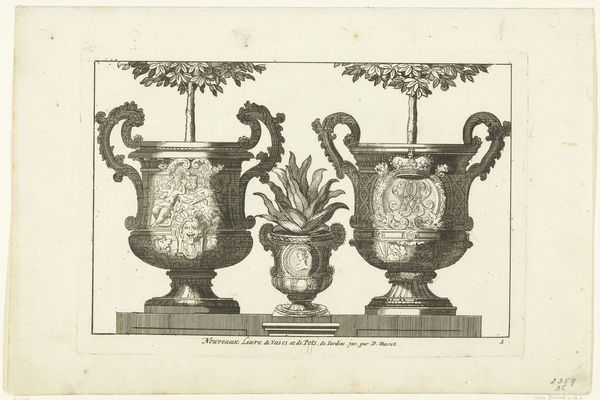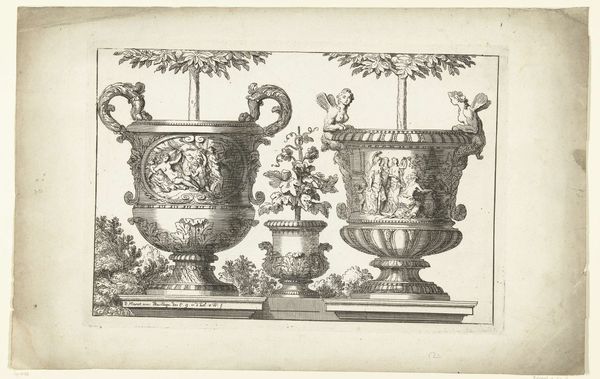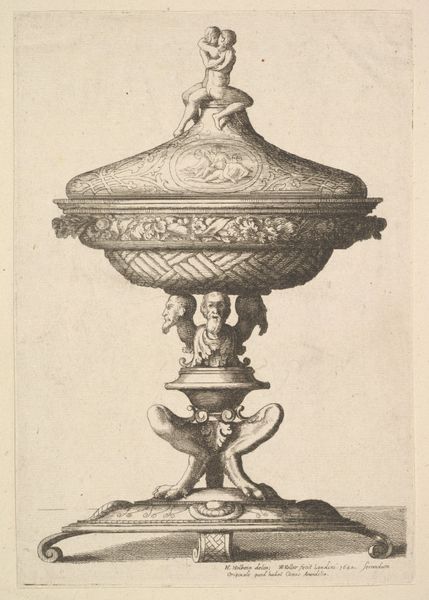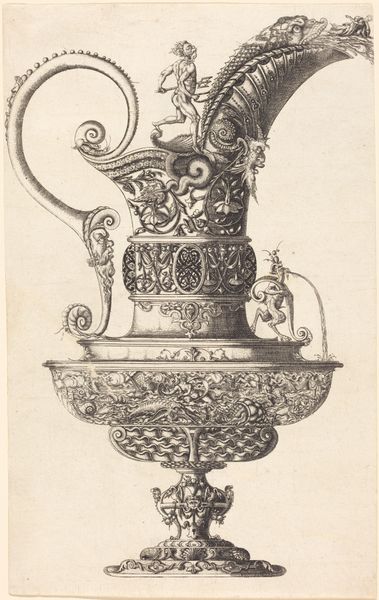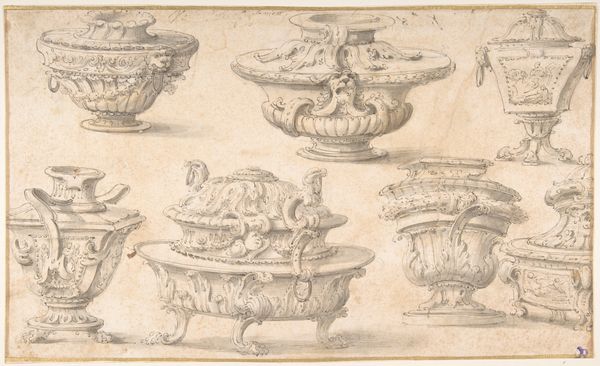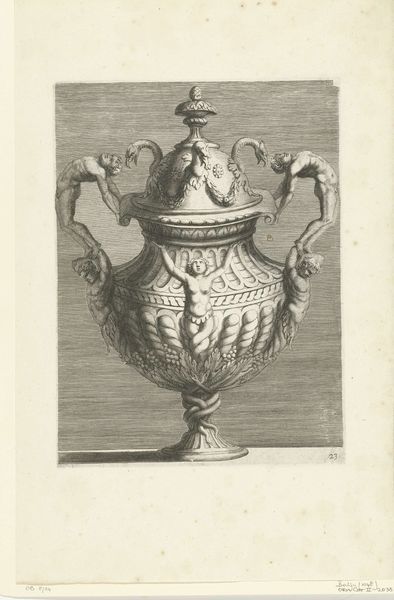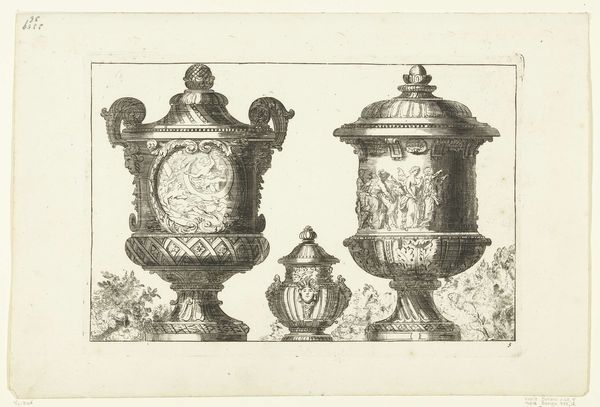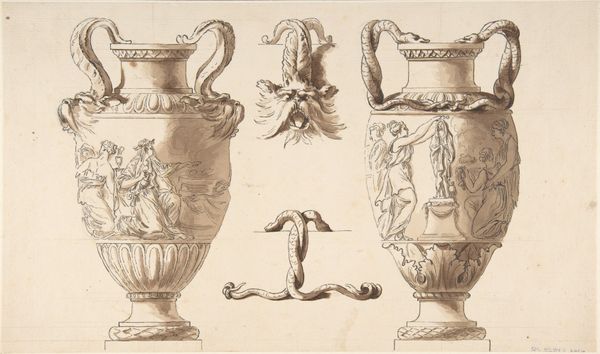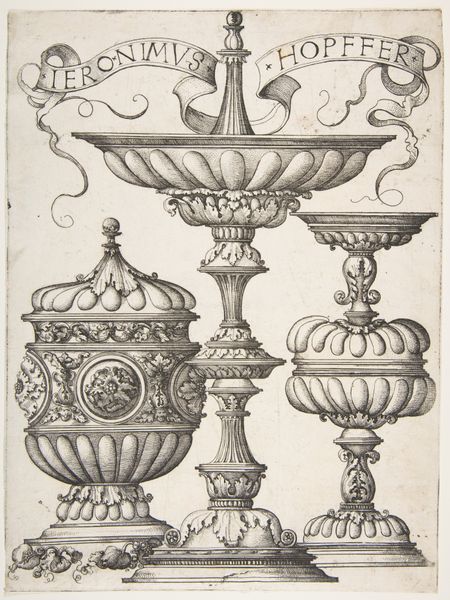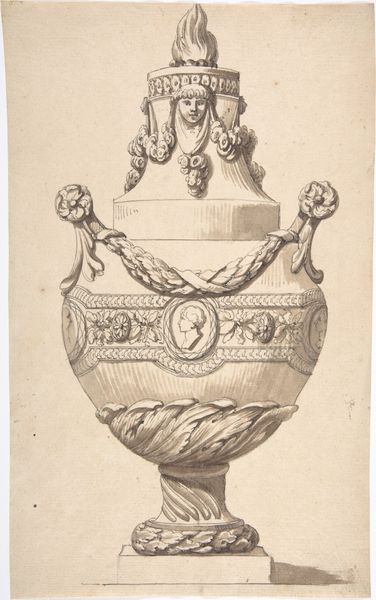
drawing, print, paper, ink
#
drawing
# print
#
paper
#
ink
Dimensions: sheet: 4 1/2 x 10 3/16 in. (11.4 x 25.9 cm)
Copyright: Public Domain
Editor: Here we have Giacomo Rossi’s "Three Ornamental Vessel Designs" from the 17th century, a drawing done in ink on paper. I’m struck by the imposing nature of these vessels and how the fierce animalistic features could communicate the wealth of their patron. How can we interpret the symbolism present? Curator: It is interesting to note the repeated motif of lions and other imposing creatures. In what ways could such symbolism communicate status or project power in the social context of the 17th century, specifically for those commissioning and displaying such elaborate objects? Consider who might be interested in asserting such authority? Editor: Someone seeking to align themselves with nobility or projecting a certain idea of strength. What kind of settings would these designs have been displayed? Curator: Given the era, they would most likely decorate the homes of aristocratic families or affluent merchants and act as visual signifiers. In what way might Rossi's drawing serve the aspirations or tastes of such circles? Editor: By offering designs that signal both classical knowledge and wealth. I see now how Rossi is shaping the visual language of power for a specific social stratum. It goes beyond decoration, doesn't it? Curator: Precisely. The lion heads aren't just decoration, they're a visual code, aren’t they? We can start to analyze how the consumption of art and design intertwined with the social hierarchies and the visual expression of power during this time. It also brings up how design, back then, had to comply to rigid structures. Editor: It's like understanding their place within a larger historical puzzle! Thanks, I will certainly investigate the use of lions in decorative arts more!
Comments
No comments
Be the first to comment and join the conversation on the ultimate creative platform.
